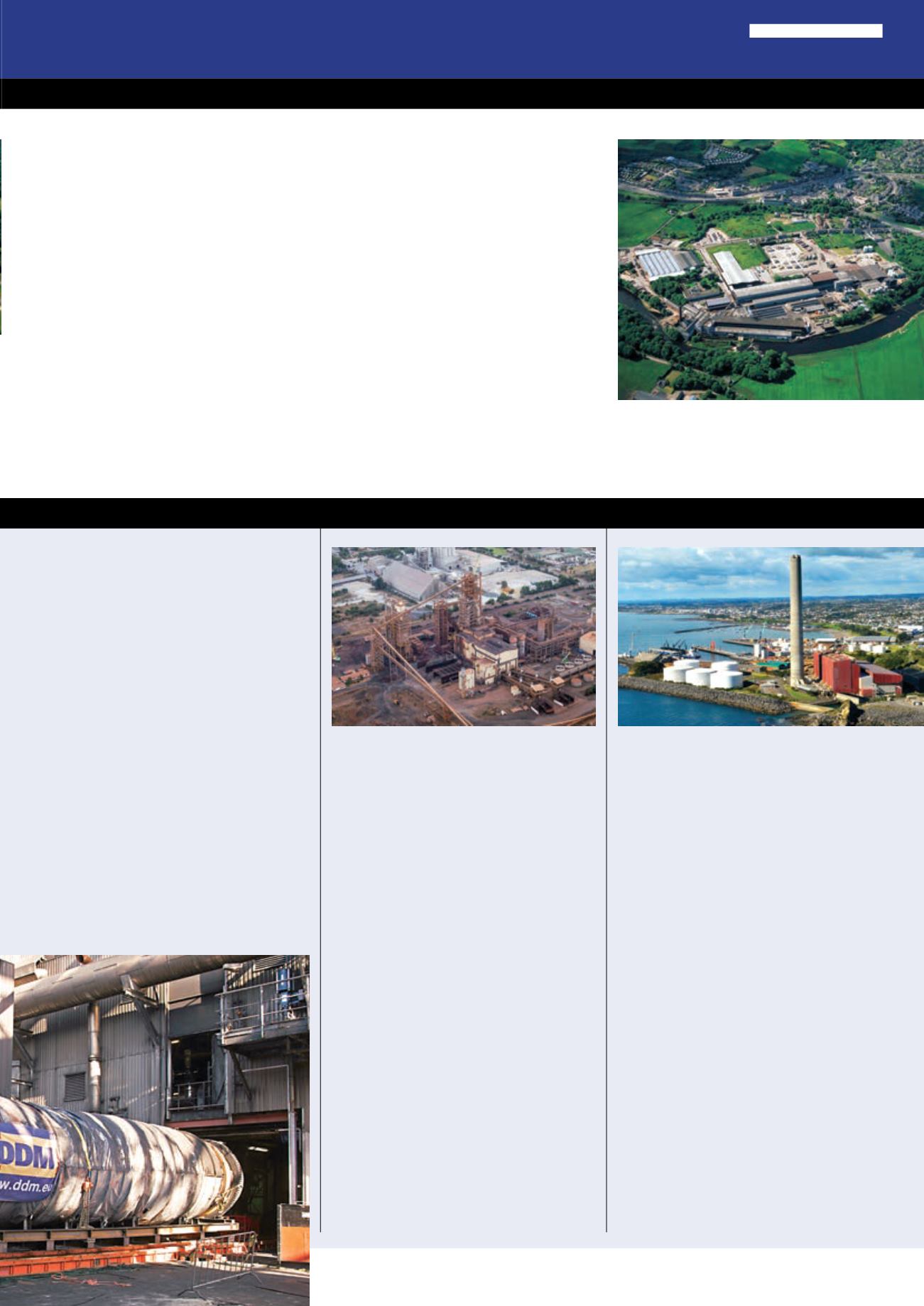
39
d
&
ri
DEMOLITION AWARDS SUPPLEMENT 2014
cormorants nesting and feeding by the River Don
and a peregrine falcon nesting on top of a brick
chimney.
Other environmental considerations included
roosting bats, protected trees, migrating birds
within the flightpath of Aberdeen Airport, noise and
dust pollution affecting the neighbours, ground
contamination from chemical and petrochemical
storage tanks, asbestos disposedwithin the floor
slab and surrounding areas within the site, control of
surface water run-off, removal of flood defences and
previously unidentified contamination.
In order to control these environmental
issues Hunter Demolition, in agreement with the
Remediation Framework Engineers, Aberdeen City
Councils’ contaminated lander officer and the
project environmental consultants, divided the
site into five environmental zones. This allowed
for the environmental issues impacting on that
zone to be addressed separately. Each zone had
a developed Environmental Management Plan that
detailed the implementation of the plan and role
and responsibilities of the various stakeholders,
identification of the environmental risks and their
control measures.
Hunter Demolition
DavidsonPapermill,
Aberdeen, Scotland
The project involved the demolition of the former
Davidson Papermill at Mugiemoss, Aberdeen. The
demolition scope of works were wide ranging and
included asbestos removal, soft strip/removal of
deleteriousmaterials, standard reach and high reach
demolition techniques. The various structures ranged
from small, single storey brick buildings up to 20m
high, 250m long (66 ft x 820 ft) steel portal frames.
The site is bounded from the northwest to the
south east corner by the River Don and Bucksburn
waterway intersects the site towards the south east
corner where it joins the Don. These rivers not only
added to the constraints relating to the physical
demolitionworks but also required a number of
associated environmental issues to be considered,
such as a number of otters livingwith their dens
within the bank of the River Don, several breeds
of birds, including ducks, herons, geese and
Liberty Industrial
Kwinana SmeltingPlant, Australia
Liberty Industrial carried out the deconstruction
of Rio Tinto’s High Intensity Smelting facility in
Kwinana, Western Australia. The project involved
the dismantling and relocation of almost half of the
Hismelt plant, whichwas sold to Chinese company
Molong, that had to dismantled and shipped to China
for reconstruction.
This undertakingwas the first of its kind in
Australia, with the project involving the complex
dismantling of significant components of an
industrial plant; never before has a project of this
scale and complexity been attempted in the country.
Deconstructionworks commenced in January
2013with the dismantling phase. More than 7,000
tonnes of industrial plant and equipment including
four bulk shipments of over 18,000m
3
(635,000
ft
3
) and 280 shipping containers were salvaged
and shipped to China. Over 2,000 bulk units were
dismantled, cleaned, labelled, recorded and packed,
eachwith instructions on how to be reassembled.
Once the dismantling phase of the project had
been completed, Liberty Industrial commenced
demolition of themajor structures using engineered
induced collapsemethods
Throughout the project Liberty Industrial managed
multiple crews acrossmultiple work fronts within a
small footprint. During the dismantling phase the
project workforce hit its peak at 60 personnel.
NIKAUContractors Ltd
Port Taranaki Power Station,
New Zealand
The Port Taranaki Power Station (PTPS) is the largest
demolition project undertaken in New Zealand to
have been demolished in terms of value and size,
and presented a number of specific challenges that
NIKAU had to successfully overcome.
The PTPS has five top hung boilers enclosed
in the Boiler House approximately 50m (164 ft)
in height and the dismantling of the five turbines
requiredmaximum lifts of 60 tonnes. The location
was on the boundary of a nationally recognised
marine reserve to the north that houses a seal
colony, fauna and flora that had an impact on the
type of deconstruction activities employed alongwith
environmental controls throughout the project.
Explosive techniques could not be used due to
fuel tanks adjacent to the site and the fact that the
turbine hall and 198m chimney (650 ft) chimney
had to remain undamaged. Asbestos containing
materials were present and had to be removed prior
to deconstruction. Construction of a permanent sea
wall to the seawater intake was required to allow full
dewatering prior to backfilling of the turbine hall pits.
Finally, recyclingwas paramount with the
removal and processing of all ferrous and nonferrous
metals for resale to overseas buyers and 20,000m
3
(705,00 ft
3
) of concrete processed so that it could be
used to backfill the site.
department. Risks were named, categorised and
assessed, andmeasures then described and taken.
Only once the risk had been eliminated or managed
couldwork commence. The sequence of activities
was complex due to the fact that a lot needed to be
done in a short period of time. A number of methods
were used and the number of parties involved grew.
DDM decided to create an 3D animated video that
showed every step in the process to allow everyone
involved in the project see how the jobwas to be
executed. The extensive time schedule and detailed
work description supported by this 3D animation
made this contract a success. DDM did not meet the
time schedule but actually completed the removal of
the first dryer one day early.
Prior to DDM’s involvement studies showed it
was best to break up the dryer and lift it out through
and over the roof. Tominimise disturbance to the
production process and lower overall costs for the
client DDM choose instead to enlarge the façade
opening and slide the dryer out through the wall.
To reduce the turnaround time DDM suggested
leaving the flanges containing asbestos, reducing the
turnaround time by twoweeks.
WORLD
DEMOLITION
AWARDS2O14


